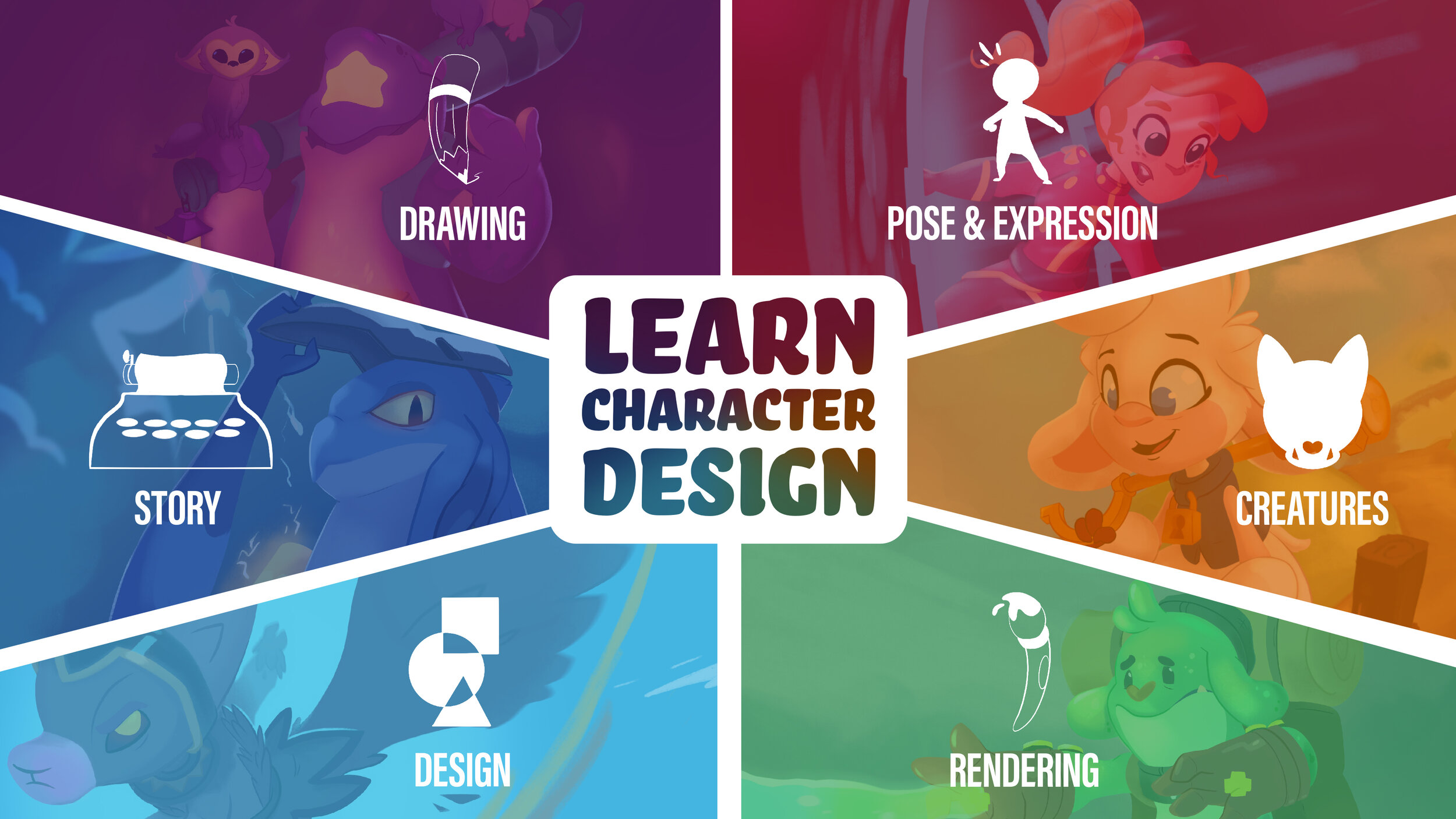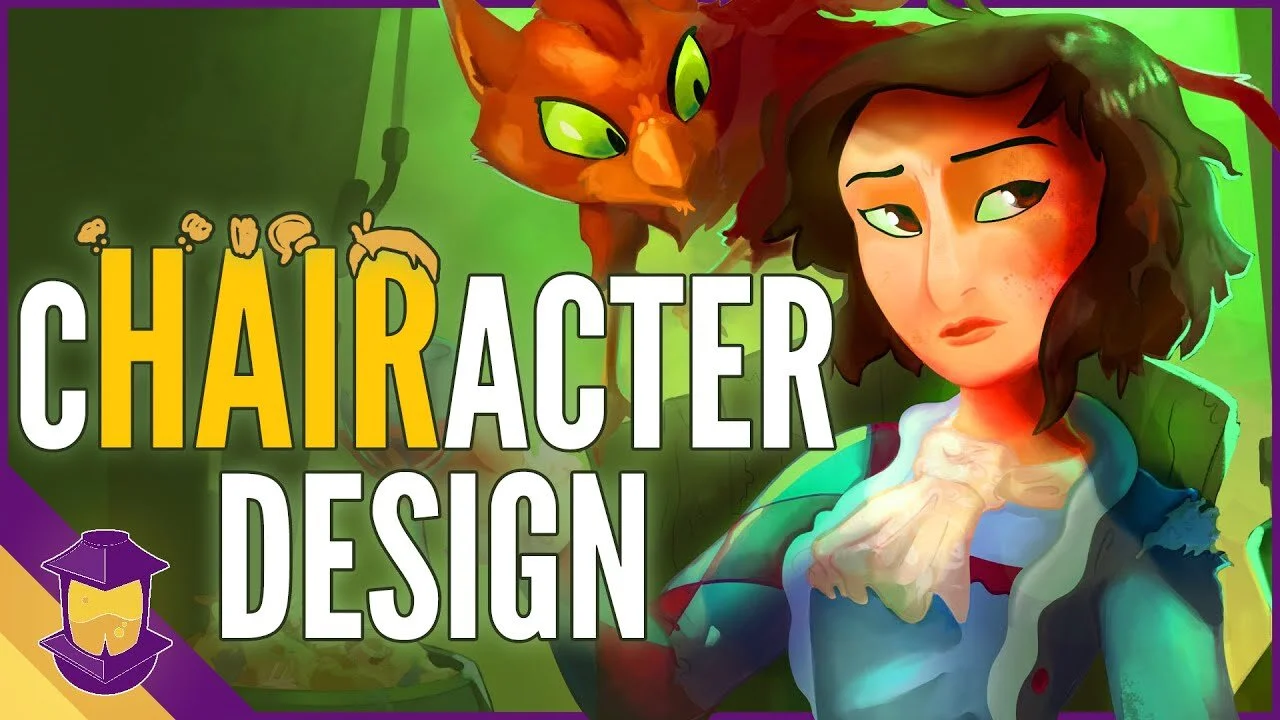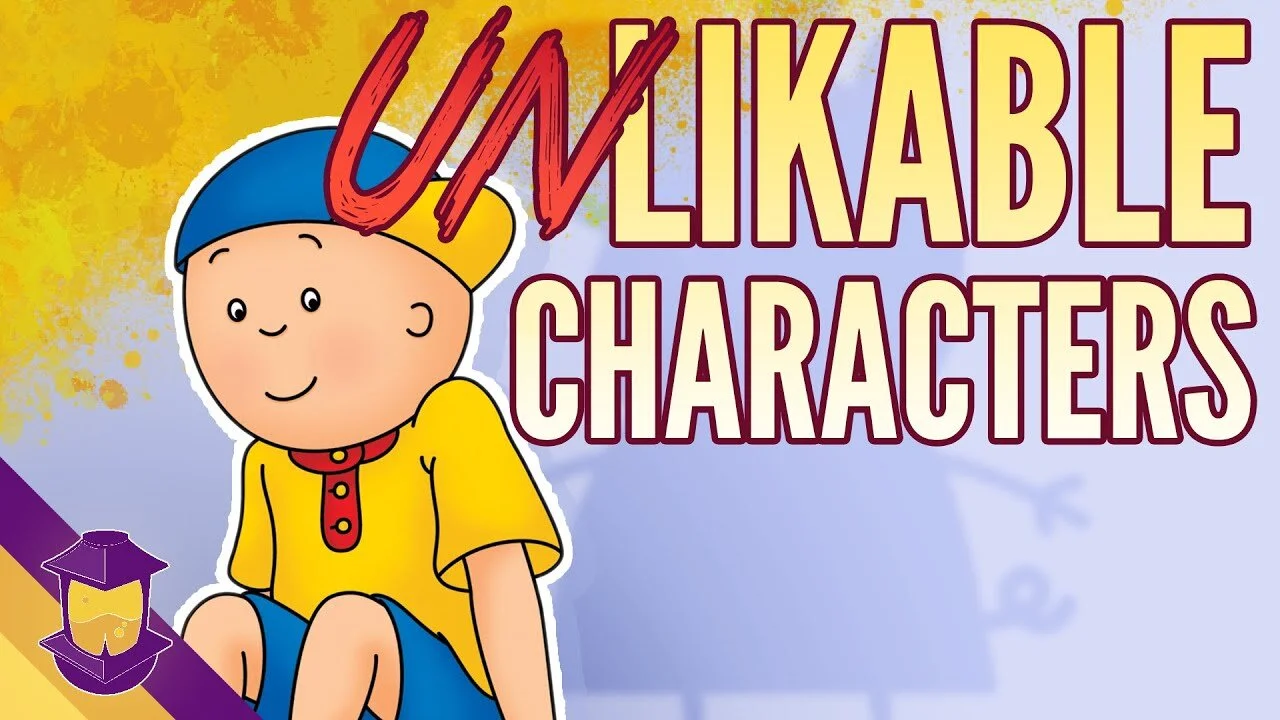Art Style Advice is Getting Dangerously Misleading, Folks
If I had a little figurine on my bookshelf for every time someone misinforms, misinterprets, or overvalues art style on the internet, well then my shelf would look exactly like it does— five figurines per square inch.
Today I’m calling out some “art style advice” I’ve seen floating around about how to find and develop your art style.
And while it might seem like I’m splitting hairs, I’m going to give you the principles of what to do instead.
Watch this video now!
Bad Art Style Advice 1: Basically, Frankenstein Your Style
So what’s this “advice” that gets under my skin? I’ve seen it presented in a few different ways from a few different people, but basically, it boils down to this:
In order to find YOUR art style, make a compilation of art that you like, copy the features you like the most, and then— BOOM! You have an art style!
Now hold the ding dang cordless phone for a minute.
Here’s the thing about this advice. A lot of it is actually going in the right direction and useful. There are shades and reflections of things that I’ve even recommended in here.
But there are, like, no less than 3 HUGE problems with this. It’s derivative, it’s far too reductive, and most importantly, it completely misses the point of what style is.
(Here’s my video on how to avoid creating derivative characters for GOOD!)
Let’s Talk About What Art Style IS
So first of all, what is art style? I think if you asked the average, non-artistic person, they’d probably describe it as something like a category, or something that reminds them of something else.
When’s the last time you saw someone call anything “3D” or stylized “Pixar style”? But from a technical or artistic perspective, it doesn’t really hold any weight.
For one thing, a lot of times Pixar movies don’t even look like other Pixar movies, and we know the reason for that, as technology has changed and time has gone on, new creative teams are behind the direction for different movies.
Now if you asked the average artist what an art style is, they might break things down a little bit more to subcategories or genres, or even just visual signatures. Colors, subject matter, or mediums that an artist highly favors.
This is usually where new artists are trying to get their foot in the door. Right away, they want to have a visual trademark, the thing that identifies them and makes them unique. They want that represented with something visual.
Really though, what art style actually is, is all about problem-solving.
What’s the problem, exactly? The problem is that art is hard and that you’re making something from nothing. Representing something, or creating something new, on a flat surface or an artificial context that resembles the real world or makes us have a reaction, is difficult.
For example, drawing photorealistic, accurate hands from every angle and position in every single piece of art we make is not only incredibly difficult and time-consuming, but it’s also not ideal or what we even want to do.
If Ub Iwerks had to draw photorealistic hands on every frame of Mickey Mouse animations he’d probably never finish one short in his lifetime.
So we get basic, gloved hands that act as simple, clear identifiers. Problem hands solved. Aaaaand Mickey doesn’t become an eldritch horror.
That’s essentially what we mean by problem-solving. It’s why character designers compliment each other on the solution or way another artist resolved something. Because by the very nature of visual development, you’re trying to make something out of nothing in a way that makes sense.
Let’s Talk About Stylization and Breaking the Rules
Frequent viewers of my videos will be able to finish this sentence before I can, I’ve said it so many times: Stylization is drawing something the wrong way intentionally.
Ub Iwerks was drawing Mickey’s hands wrong—that’s not how a mouse’s paw or a human’s hand looks!
Mike Mignola’s Atlantis hands are wrong— there aren’t that many hard angles in the human hand!
Stylized designs are inherently breaking some kind of rule, and the best ones break the rules to give us something visually appealing.
And what’s that thing about breaking the rules? You have to know the rules before you break them.
Both of these artists knew a decent amount about drawing hands, the construction of them, their motion, before they drew or created the stylized versions that are something of a signature for them.
(Looking to make fan art of your own favorite characters that’ll create a buzz? Check out my video How to Make Fan Art that Makes an Impact)
So what does this have to do with bad style advice?
The yearning that some new artists have to jump into having a signature style, is both backwards and omitting a huge part of the process.
It’s like if you got a math test, and as the answer for question one, you just wrote:
“You’re going to like my performance on this test so much you’re going to give me an A” and left the rest of the test blank, expecting the teacher to give you a 100%.
The desire exists to succeed, but the effort to do so has been leapfrogged.
Bad Art Style Advice 2: Collage a Style
What about this art style advice— specifically, the one where you “create a collage of your favorite artists’ work in order to create, somehow, a new art style”?
Well if all I did was copy Mike Mignola’s hands, they don’t become my hands just because the face looks like it was drawn by Nicholas Kole.
There’s plenty of truth to the statement that there’s nothing new under the sun, but by copying the answers from someone else’s test you are by definition going to be derivative.
And if the desire was to be Mr.-Fresh-Unique-Art-Style, all someone has to do is be familiar with who you’re copying to know its derivative.
BUT, the math test analogy goes further.
Y’know how teachers ask you to show your work? To show you how you arrived at the answer? Because you copied the answer off of someone else’s test, you don’t know how you got there.
By skipping the art fundamentals that allow you to have a solid understanding of the work and going directly to the way that someone broke the rules intentionally, the work also just looks wrong.
(Improve your drawing skills with help from Module 1: Drawing from the Learn Character Design Course. or check out Module 3: Design which teaches a basic and advanced education on fundamental design techniques.)
Like I said though, there’s an element of this that’s great advice. Studying the way that other artists make the work they do is always a good practice, and I’ve recommended it dozens of times before.
This should only be done, though, alongside your own training and understanding of fundamentals. Learning to make things, for lack of a better term, the right way.
The thing is, even without this advice, most artists go through this process naturally. Their source of inspiration for starting to make things themselves is usually so singular that it’s obvious what their inspiration was. And that’s fine.
But to really make things their own, artists need to diversify and expand their sources of inspiration.
You also need to realize the limits present when your influence, fuel, and inspiration all comes from things that other people made. Art, games, movies, comics— all already made by someone else.
If your only reason for making a video game was that “I really like Pikmin”, you know what the superior experience or game is going to be? Pikmin.
Bad Art Advice 3: Keep it Consistent!
Another huge piece of discourse surrounding art style is this overemphasis of making sure that all of your work is in one consistent style.
Two things to think about with this:
If your aim is to get hired, Studios actually value people who are able to communicate and learn new art styles.
If you are trying to make the art you make now look like the work you made two years ago, you’re inherently stifling any kind of progress you could be making.
Here’s The Advice I Offer You Instead
All in all, style is way overvalued. It’s a means to an end for artistic communication and expression.
The advice that I give is to instead, find your artistic voice.
Completely outside of the technical skill and techniques that people use to do that visual problem solving, the greater source for why something looks the way that it does comes down to what they are trying to say.
They want to make something look scary— it’s going to look scary. Delightful and serene— it’s going to be made that way.
Understanding that deeply personal part of you and what it is that fuels it to make things is a much greater force for style. It’s also something that can’t be copied from someone else or faked.
The exact reasons that you and I make things, the exact experiences we’ve been through, are completely unique.
The quest to go on then, doesn’t become, “what kind of collage of other people’s solutions do I want to cobble together into a golem of derivative thoughts”—No, it simply becomes: What am I trying to say?
And not just from a cerebral way but from the actual, physical drawing or creating standpoint.
You’ll find that the process of trying to understand something the right way, not wanting to do something the right way, and then figuring out your own way to streamline, simplify, or distort something, is going to be so much more creatively fulfilling.
And my biggest hope is that you can come across those moments yourself.
Well, this has been your inaugural UMBRAGE, friends! You have walked away from toxic advice and come out on topic with a healthier approach to art— creating your own artistic voice.
We talk about good character design overall in my course Learn Character Design. And make sure you’re following over on Instagram @bageldenizen, I share a lot of my own processes and designs there regularly.
Thanks for reading, and have fun creating!
Do you Want to Master your Digital Art and Character Design Skills?
You Can Do it in Just Six Steps
Take the online course now that has helped countless students master basic and advanced character design skills.
Hey! I’m Brookes Eggleston…
If you’re new here, welcome! I’ve worked in studio settings and in a freelance capacity as a Character Designer, Illustrator, Story Artist, and 3D Modeler for nearly 15 years. But what I love as much as drawing characters is sharing what I’ve learned. Get to know my mission here at Character Design Forge.























